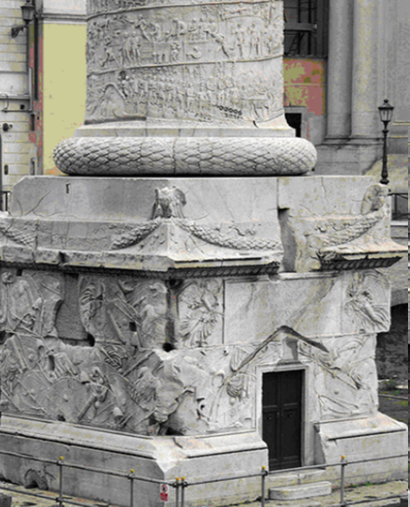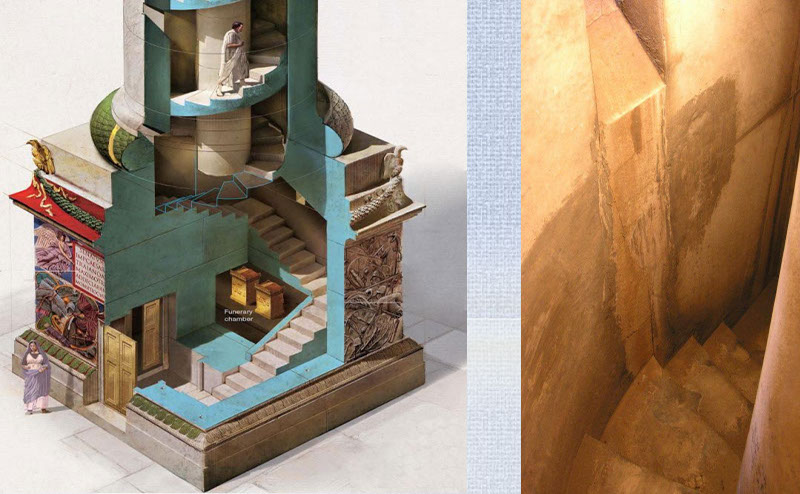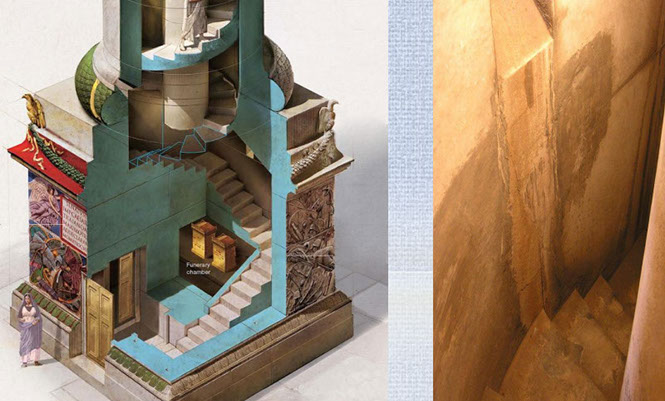
The column consists of 18 huge blocks of Carrara marble, each of which weighs approximately 40 tons and has a diameter of about four meters. The complete sculptural frieze measures about 200 m and turns the column 23 times. Inside, a spiral staircase with 185 steps allows access to a platform with a viewpoint at the top.
Its dimensions:
Height of the base: 1,7 m7
Shaft height: 26,92 m
Average drum height: 1,521 m
Shaft diameter: 3,695 m
Capital height: 1.16 m
Height of the column itself: 29.78 m
Height of the helical part of the staircase: 29.68 m (~100 Roman feet)
Height of the column, excluding the Plinth: 28.91 m
Pedestal height, including Plinth: 6.16 m
Height of the upper part of the column above the ground: 35,0
Its interior, hollowed out, forms a spiral staircase with 185 steps that allows access to the viewpoint.
The FUSTE of the column, formed by 18 marble drums of 32 tons each, is 3.5 meters in diameter
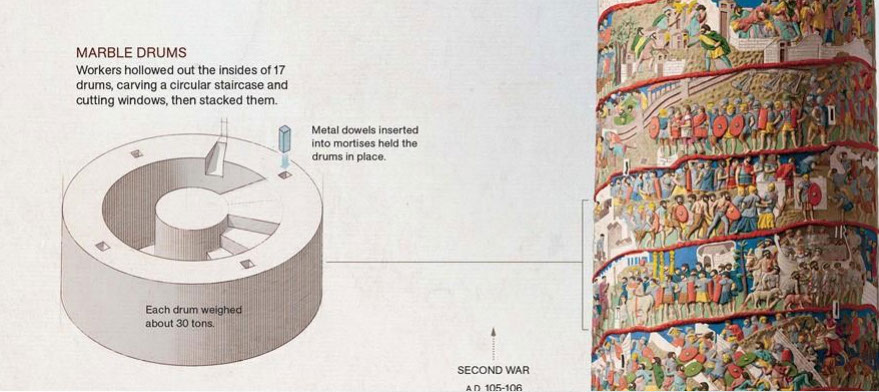


TRAJAN'S COLUMN
TECHNIQUE
Ascending in a spiral around him, the story of Dacian campaigns unfolds: thousands of figures carved in every detail march, build, fight, sail, scape, negotiate, beg and perish in 155 scenes.
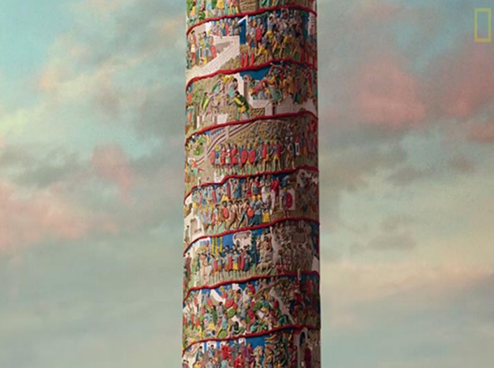
The pedestal is a cube formed by eight large blocks of marble. In the angles there are eagles with garlands that refer to the imperial power and the apotheosis of the deceased rulers.
This pedestal is hollow and inside there is a small sepulchral chamber where two gold urns with the ashes of Trajan and his wife Plotina were found.

The bas-reliefs that decorate it represent weapons of the piled dacians, and refer to the victorious character of the emperor
